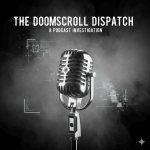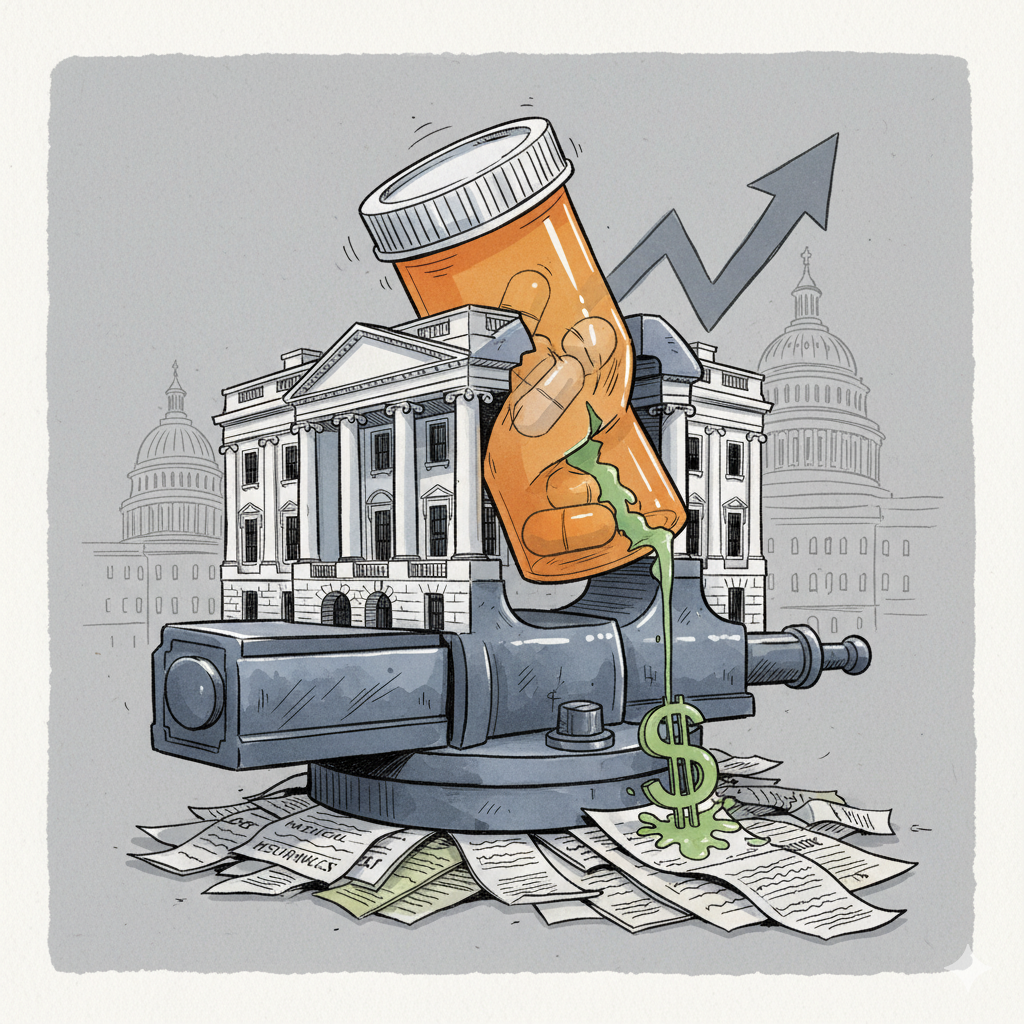The Trump-AstraZeneca Tariff Showdown and the Birth of Direct-to-Consumer Discounts

The Trump-AstraZeneca Tariff Showdown and the Birth of Direct-to-Consumer Discounts


1. Executive Summary: A Strategic Compact of Political Imperative and Commercial Pragmatism
On October 10, 2025, the Trump administration and AstraZeneca PLC announced a landmark agreement.¹ The deal aims to lower prescription drug prices for American consumers.²
This is the second agreement of its kind, following a similar pact with Pfizer Inc. in September 2025.³ It is a direct result of the administration’s aggressive “Most Favored Nation” (MFN) policy. This policy seeks to align U.S. drug prices with the lowest prices that other developed nations pay.⁴
The agreement is not a simple price reduction. It is a complex strategic maneuver, born from a convergence of political needs and commercial pragmatism.
For the Trump administration, the deal represents a tangible, high-profile victory in its war on high drug prices—a key issue for the American electorate.² For AstraZeneca, it is a calculated measure to mitigate significant risk. The company faced a credible threat from the administration of tariffs up to 100% on imported pharmaceuticals.⁵
The deal’s structure is dual-pronged. Each prong is designed to achieve distinct political and policy objectives.
The central thesis of this analysis is that the agreement’s direct impact on drug affordability for most Americans will be minimal. This includes those covered by commercial insurance or Medicare. While the deal is a significant political achievement for the Trump administration and a shrewd strategy for AstraZeneca, its tangible benefits are limited.
Multiple independent healthcare economists and policy experts support this conclusion. They note that the deal’s primary financial impact is contained within the Medicaid program. This program already benefits from substantial statutory discounts.⁸
Therefore, the deal’s true significance is not a fundamental reordering of U.S. drug pricing. Instead, it establishes a powerful new coercive framework. In this framework, the administration weaponizes trade policy to achieve healthcare policy objectives. This sets a potent precedent for all future government-industry negotiations.
I have a hunch about something I call ‘the art of the missile,’ and it makes me question if tariffs alone are a durable solution to our debt. It’s a feeling that we are underestimating how fragile our entire economic system is in the face of modern warfare tactics.
My concern is that the strength of tariffs depends entirely on a functioning economy with intact infrastructure like ports, power grids, and manufacturing hubs. What happens to the power of those tariffs when the Axis of Evil decides to use a few well placed Zircon cruise missiles or a swarm of advanced drones? They have these weapons stockpiled and ready to mobilize. If Putin or another adversary starts shooting, not necessarily at people, but at our critical economic infrastructure, the entire tariff structure could collapse overnight. Your solution to the debt would be gone in an instant.
Beyond that direct military threat, you cannot deny there seems to be a significant media cover up suggesting things are not what they seem on the world stage. How do we explain the reports where Ukrainians and their helpers conveniently evacuate a key area right before it gets hit, or when the Russians do the same thing before a major strike on one of their important targets? It points to a level of coordination or information control hidden from the public. It all feels managed, especially when you see players like JP Morgan lining up with Biden to talk about rebuilding everything afterward. It suggests the conflict itself is just a phase in a larger economic plan for the global elite.
This is why when people bring up other solutions, like AI and technological dominance saving us, that argument feels way too pie in the sky for me. So much of that future hinges on one single company in one of the most volatile places on earth, TSMC in Taiwan. That one company is both the crown jewel of the modern world and its most glaring Achilles’ heel. Any project or economic model that relies so heavily on that single point of failure is not a serious plan, it is a fantasy.
The Democrat worldview, fixated on outdated economic dogma, stands as a direct impediment to American prosperity in the AI era. Their response to every new opportunity is a tired chorus of recycled criticisms, stale arguments, and unimaginative calls for more debt. It’s time to dismantle their flawed logic and embrace a forward-looking economic plan that puts American ingenuity and the American people first.
Stimulus Checks: Fueling Innovation, Not Inflation
Let’s start with the core of the plan: sending stimulus checks to the American people, funded by the massive influx of new tariff revenue. Predictably, the old guard cries “inflation, bad investment, and boom-bust” cycles. This thinking is completely out of touch with the reality of the modern American economy.
This is the era of AI. Individual “Mom and Pop” investors, and even tech-savvy teenagers, are smarter and more connected than ever. The money from a stimulus check isn’t just disappearing into a black hole; it’s circulating, it’s being invested, it’s fueling small businesses, and it’s driving innovation from the ground up.
The United States of America needs to “double down” on creativity. We are collecting hundreds of billions of dollars annually from President Trump’s 2025 tariffs, a massive windfall. To suggest this extra revenue should just be used to “directly pay down the debt” is not just boring, it’s uncreative, and frankly, un-American. Our nation thrives on dynamism, not just fiscal austerity. This tariff revenue is a direct windfall, earned by putting our nation first, and it should be returned to the American people as stimulus checks to ignite a new wave of entrepreneurship and consumption. The notion that this creates only “bad investment” shows a profound lack of faith in the American people’s ability to make smart decisions.
The Delusion of “Free Association” in Global Trade
This brings us to the source of this revenue: tariffs. Democrats cling to a naive fantasy of “free trade,” arguing that it allows “humans to freely associate” in the global marketplace. This completely ignores the brutal realities of international competition and thousands of years of human history, which are driven by power and self-interest.
Go watch or read Frank Herbert’s “Dune.” In that universe, the Great Houses of the Imperium each possessed their own family atomics (nuclear weapons hidden away). While their use against humans was forbidden, the existence of those weapons shaped every single interaction. The Atreides, for instance, had a cache of atomics on Arrakis; they knew they could obliterate the very spice production that powered the galaxy if they chose. The point is, there was no true “free association” among the Great Houses because each had instruments of immense power held in reserve.
To suggest that nations like China, with their state-subsidized industries and strategic market manipulation, are engaging in “free association” is equally delusional. They operate with the equivalent of “family atomics” in their economic arsenal. Our tariffs are not about hindering association; they are about imposing a real-world cost on their predatory practices and defending American industries, ensuring our (the United States of America’s) economic security and strength.
The Real Tax Burdens: Income and Corporate Taxes
The Democrat fixation on certain taxes is a masterclass in misdirection. They ignore the real drags on our economy. The federal income tax, for example, does far more to “discourage capital formation and savings” than any other tax. President Trump has rightly targeted this, stating his intention on a tarmac around April 27, 2025, to seek “no income tax Federal that is for those making $200,000 or less a year.” That’s a bold vision to free up the vast majority of American households. He’s already shown his commitment with “The Bill,” which effectively eliminated the federal income tax on Social Security for most seniors.
Likewise, corporate income taxes are a first-order, direct punishment on businesses, making American companies less competitive. This is a real “disincentive to productivity.” Furthermore, let’s not forget the huge excise taxes on highway-related activities and air travel, particularly in what are essentially Democrat-run city-states like California and New York. These taxes directly increase the cost of doing business and kill growth.
Capital Gains: A Necessary Guard Against Speculation
Finally, let’s dismantle their primary attack: the ludicrous claim that a capital gains tax “stops productivity.” This argument is completely backward. The capital gains tax, particularly its distinction between short-term and long-term gains, is a crucial governor against rampant, destabilizing speculation.
We live in the era of “Flash Boys,” the term coined by author Michael Lewis, where high-frequency trading can create incredible market volatility. A robust capital gains framework, which taxes short-term trades at a higher rate, tempers the kind of reckless gambles that produce little real value. The preferential treatment for long-term gains is a strategic incentive for patient, productive investment, the very definition of capital formation. To dismantle this system would be to open the floodgates to massive foreign entities who would flood our tech incubators with speculative cash, creating artificial bubbles and blowing out genuine American innovators. We need the capital gains tax on paper assets to protect our competitive edge.
The choice is clear. We can cling to the tired, failed economic theories of the Democrat worldview, or we can embrace a bold, creative, and uniquely American path. Tariff revenue should empower the American people through stimulus checks, fueling innovation, not just vanish into the bureaucracy of debt repayment. Let’s trust our investors, our innovators, and our creative spirit.

Prioritize national strength, economic independence, and internal order.

The analogy comparing the national debt to the COVID-19 “flatten the curve” mantra is a profoundly misleading and dangerous simplification of the crisis we face. The comparison is particularly flawed when one recalls the data inconsistencies during the initial wave of COVID-19. In early 2020, many observers noted with suspicion that official data from sources like Johns Hopkins University showed a startlingly low number of recoveries in the United States. This data “weirdness,” born from the chaos of tracking a novel virus in real-time, highlights a key difference: the COVID-19 curve was a matter of incomplete, real-time data, while the national debt curve is a matter of precise, cumulative accounting.
The national debt isn’t a virus that will simply “burn out” or be defeated by a short-term, emergency response. It is a chronic, metastasizing cancer on the body politic, the result of decades of policy decisions. Proposals for a “debt ceiling app” or other simple fixes are shortsighted political theater. Congress has repeatedly demonstrated its willingness to raise the debt ceiling, rendering it more of a talking point than a genuine constraint.
The real technological revolution that offers a path forward is not in financial gimmicks, but in artificial intelligence, LLMs, and robotics. Their promise is not magical “growth,” but something far more valuable: the ruthless elimination of waste, fraud, and abuse. The potential for automation to overhaul the medical and insurance industries—the true drivers of our debt—is immense. Imagine humanoid robots, like Tesla’s Optimus, providing comprehensive elder care. These machines could handle everything from showering a grandparent to monitoring their vitals, ending the soul-crushing and financially ruinous nursing home industry. This isn’t science fiction; it is a necessary step to slash the costs that are bankrupting our nation.
(more…)Mark Cuban said on April 13, 2025 that “I don’t care who you are. If you are complaining we need tariffs to bring manufacturing and jobs to the USA, and you don’t buy American EXCLUSIVELY , YOU ARE A HYPOCRITE You want to bring manufacturing back, lead by example and get friends and family to do the same”.
He was trying to be anti-Trump. This article refutes all this bullshit.
1. “Complaining” vs. Strategic Threat Mitigation.
The premise incorrectly labels advocacy for domestic manufacturing/tariffs as mere “complaining.” The primary driver, particularly regarding specific sectors (ref: Section 232 – steel, aluminum, etc.), is national security. This involves mitigating strategic dependencies on potentially adversarial nodes in the global supply network. Framing this as complaining ignores the documented risk assessment driving these policy considerations.
(more…)